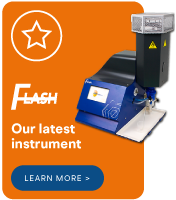Using Inductively Coupled Plasmas to detect the concentration of ions in solution
- BWB Technologies
- Mar 4, 2021
- 2 min read
Updated: Mar 8, 2022

Photometry is a technique of measuring light in terms of its perceived brightness to the human eye.
In chemistry, it is commonly used in the study of solutions and liquids.
Since its conception, scientists have strived to increase the accuracy and precision of elemental concentration determinations via instrumentation.
This search has culminated in the development of modern-day Inductively Coupled Plasmas (ICPs), coupled with a detection method such as a mass spectrometer.
As we have already made a posting on inductively coupled plasmas before, this time we shall be focusing on the heating method and the plasma itself.
The heating method
The method by which the sample is heated is via an induction coil.
Inductive heating is the process of heating an electric conductor material via Eddy currents (current which are looped via a magnetic field).
The components that are essential to this technique are:
· An electromagnet
· An electronic oscillator
· A rapidly altering magnetic field
· An inert gas
How does Inductively Coupled Plasma work?
The most important factor in ICPs is that the heat energy released from the induction coil is generated from within the coil, instead of being conducted from an outside source.
In flame photometry, meanwhile, the gasses combustion is the source of energy which is conducted into the analyte of interest.
What are the variables in using Inductively Coupled Plasmas?
When using ICP instrumentation, instead of air being the gas of choice to aid in the combustion of fuels such as in flame photometry, an inert gas is used (such as neon or radon).
This is because of the intense heats involved in induction heating results in all of the electrons of an atom being stripped in plasma formations, leading to emission lines being given out from the carrier gasses.
A gas is still essential to be used as a kinetic energy driving force to turn the sample from a liquid into a fine mist through the application of a nebuliser – a part which is found commonly in both ICP and flame photometers.
Due to ICP being only a heating device in an instrument that is capable of plasma formation, a detection method must be added, such as a mass spectrometer or a UV-Vis light spectrometer.






